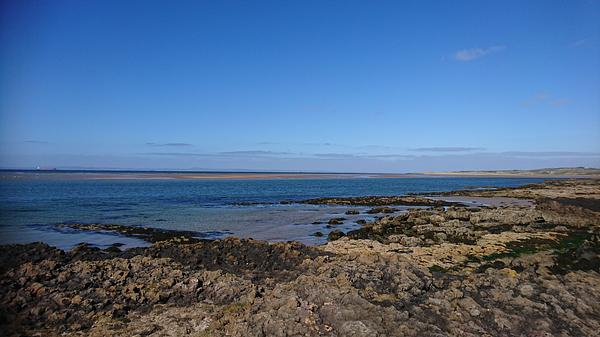
Therapeutic qualities of a coastal landscape
In this month’s blog, Brenna Stewart, Visitor Experience Assistant in the Discovery Experience shares an extract from her honours project exploring the connection between blue spaces and wellbeing.
Throughout history, blue spaces have often been revered for their therapeutic qualities, a belief which can be traced as far back as the Greeks, Romans and Phoenicians. Trips to the seaside were even prescribed by Victorian doctors, as the sea air was thought to help heal certain ailments. This sentiment has remained to this day, and culturally, water is still seen as a symbol of healing and purification around the world.

The concept of therapeutic landscapes was first introduced to me in my third year of university whilst studying Geography and Politics at the University of Dundee. The term was coined by Wil Gesler in 1992 and has since been used to understand the link between landscapes and health. Therapeutic landscapes are those which are considered either places of healing, or health promoting, and can range from cultural places such as the Lourdes in France, to hospitals or even your own home. These landscapes are therefore varied and differ from person to person. Having spent my teenage years growing up in North Berwick, the coast had become a therapeutic landscape to me, long before I was aware of the concept. It was not until I moved away to a city to study as an undergraduate that I realised just how much the coast benefitted my physical and mental wellbeing. I knew then, in the lecture that introduced therapeutic landscapes to me, that this concept would be the basis for my honours project, and I aimed to explore the link between the coast and wellbeing.
.jpg)
To carry out my research, I used both an online questionnaire and semi-structured interviews, alongside conducting a literature review. The online questionnaire helped me gather a general consensus of a sample of North Berwick’s population, in relation to their wellbeing and the coast. I had chosen to specifically focus on North Berwick, as it fit the criteria of a coastal town. I gathered 131 questionnaire responses which were then analysed using a data software called R Studio. Following this, I conducted 10 semi-structured interviews involving participants from the questionnaire and analysed the data using manual coding.
So, was there any truth to the claims of healing powers from the ancient civilisations and Victorian doctors?
This is what I discovered in my literature review and research findings.
Research suggests that the coast can help individuals reach recommended physical levels, by encouraging individuals to engage in a more active lifestyle. The coast provides opportunities for physical exercise, both on land and in the water, through activities like walking, running, swimming, water sports, horse riding and yoga. A study conducted in Australia found that those who lived closer to the sea were more likely to be active in what was described as the ‘coastal effect’. Exercising on the beach can also provide additional benefits in comparison to exercising inside, as it can produce mood enhancing qualities through looking out to the shore, hearing the waves crash and seeing the landscape change with cyclical changes of the tide.
The coasts not only have the potential to support physical health, but they can also be sites that maintain emotional and spiritual connections. Taking a dip in the sea can generate a deeper connection to nature, while also potentially providing relief to those who suffer from skin related diseases and arthritis. The coast can support mental wellbeing, by providing stress relief, relaxation and enjoyment. Rougher weather by the coast can also be seen as therapeutic as it brings an element of risk to the environment, which generates feelings of excitement. It can remind people about the forces of nature and evoke feelings of awe and respect.

Research also indicated that people do not need to visit the coast every day to enjoy the therapeutic benefits and just knowing the coast is nearby can provide comfort. Hearing and smelling features of the coastal landscape can trigger therapeutic benefits through imagination, despite not physically being there.
The coast can also nurture social connections by providing a site for social interactions to occur. It may also be used as a site of solitude and encourage individuals to reflect. Those who lived by the coast for longer, were more likely to say that the coast made up a part of their identity. This can also be impacted through shared experiences such as a group of surfers.
Negative feelings over development and environmental quality may reduce the therapeutic qualities of the coast, since people can develop a strong connection to the environment which in turn means they are more likely to feel protection towards it. Development may be seen as destroying the connection people have with the coast, and there is evidence to suggest that underdeveloped beaches produce more therapeutic benefits.
The above findings show that the coast can be very beneficial to people’s health and wellbeing. The next time you find yourself by the coast, I encourage you to take a moment to listen to the waves crash, see if you can smell the sea, and have a look out onto the horizon. You may just find that the coast is one of your therapeutic landscapes.
Brenna Stewart, 2022
